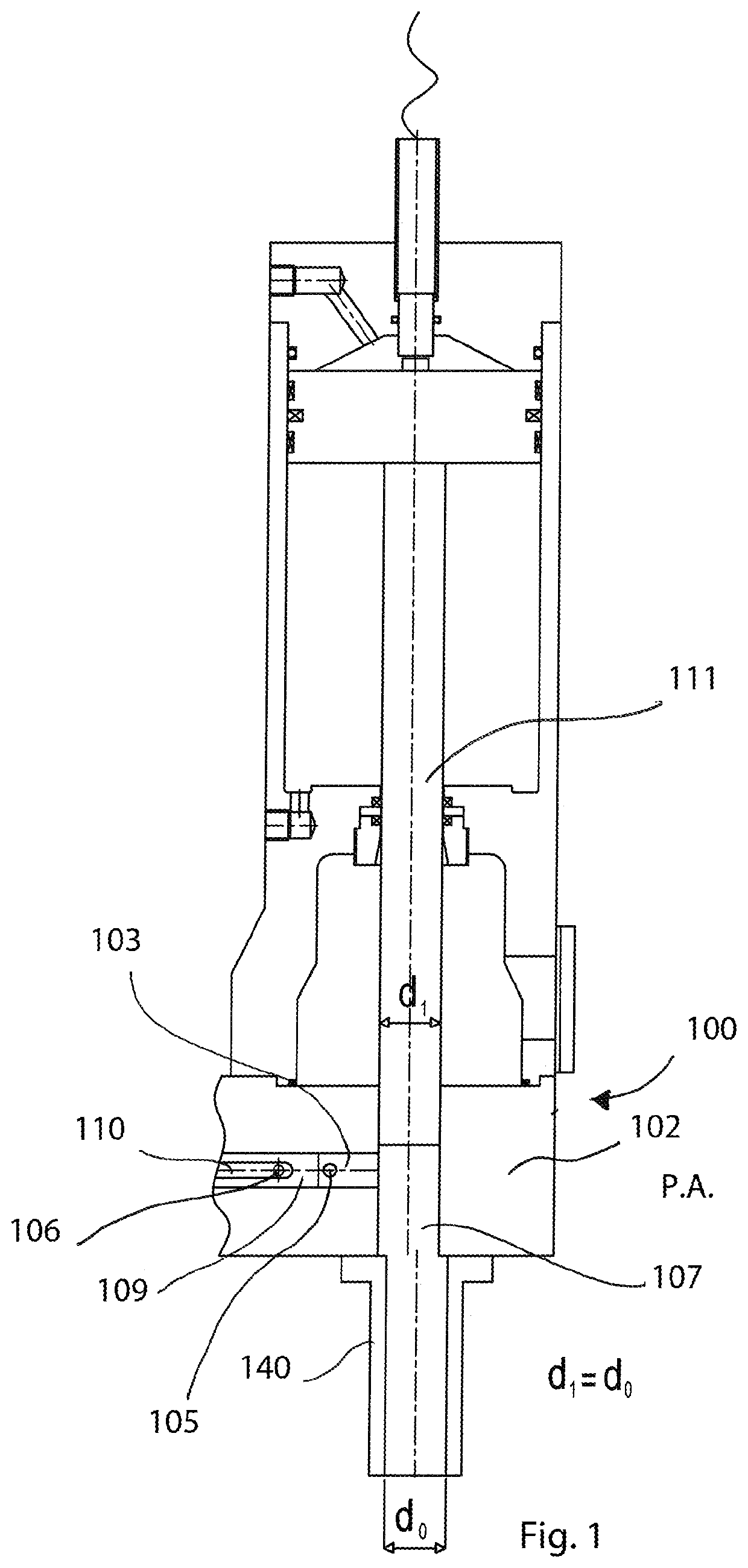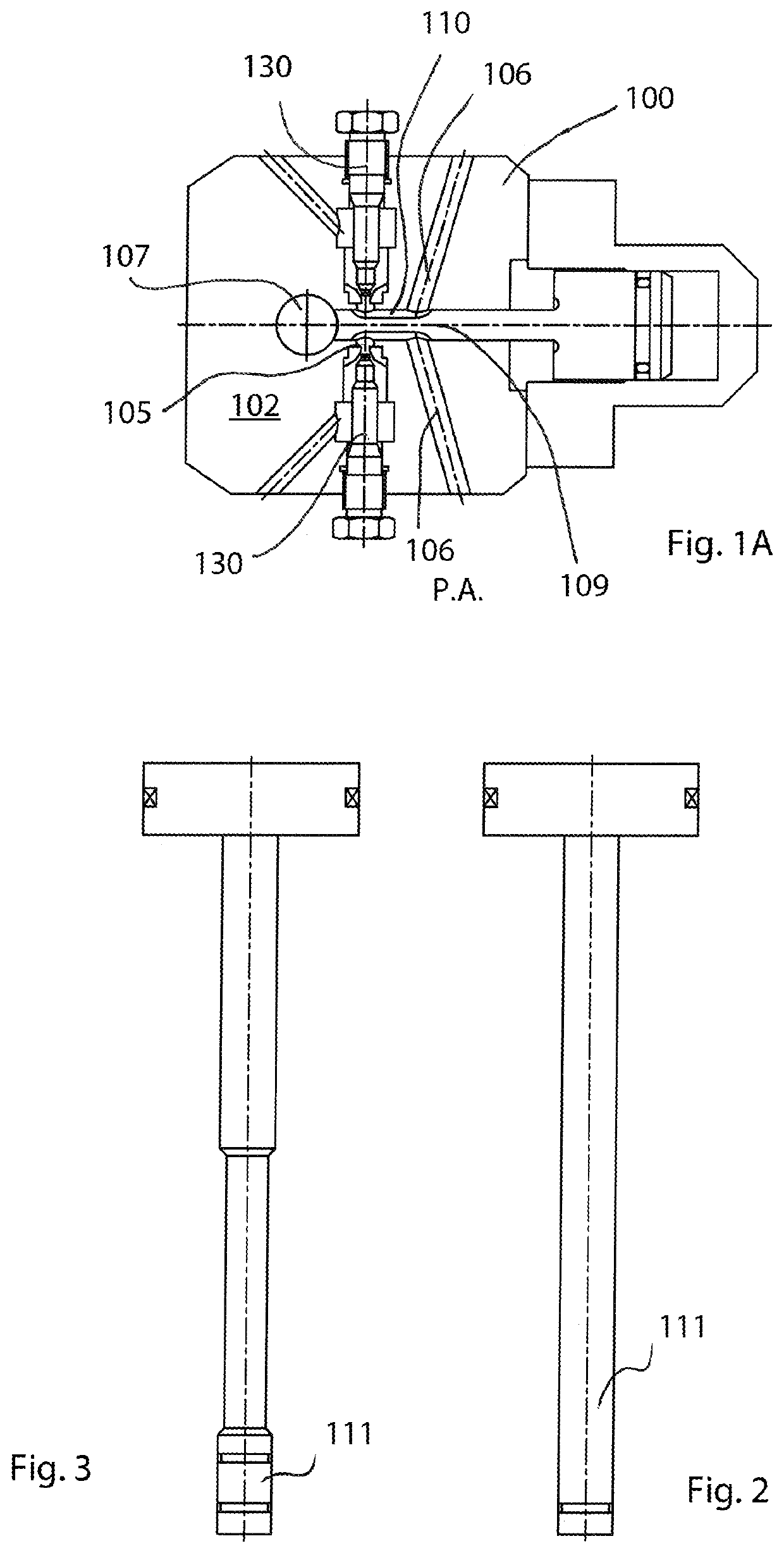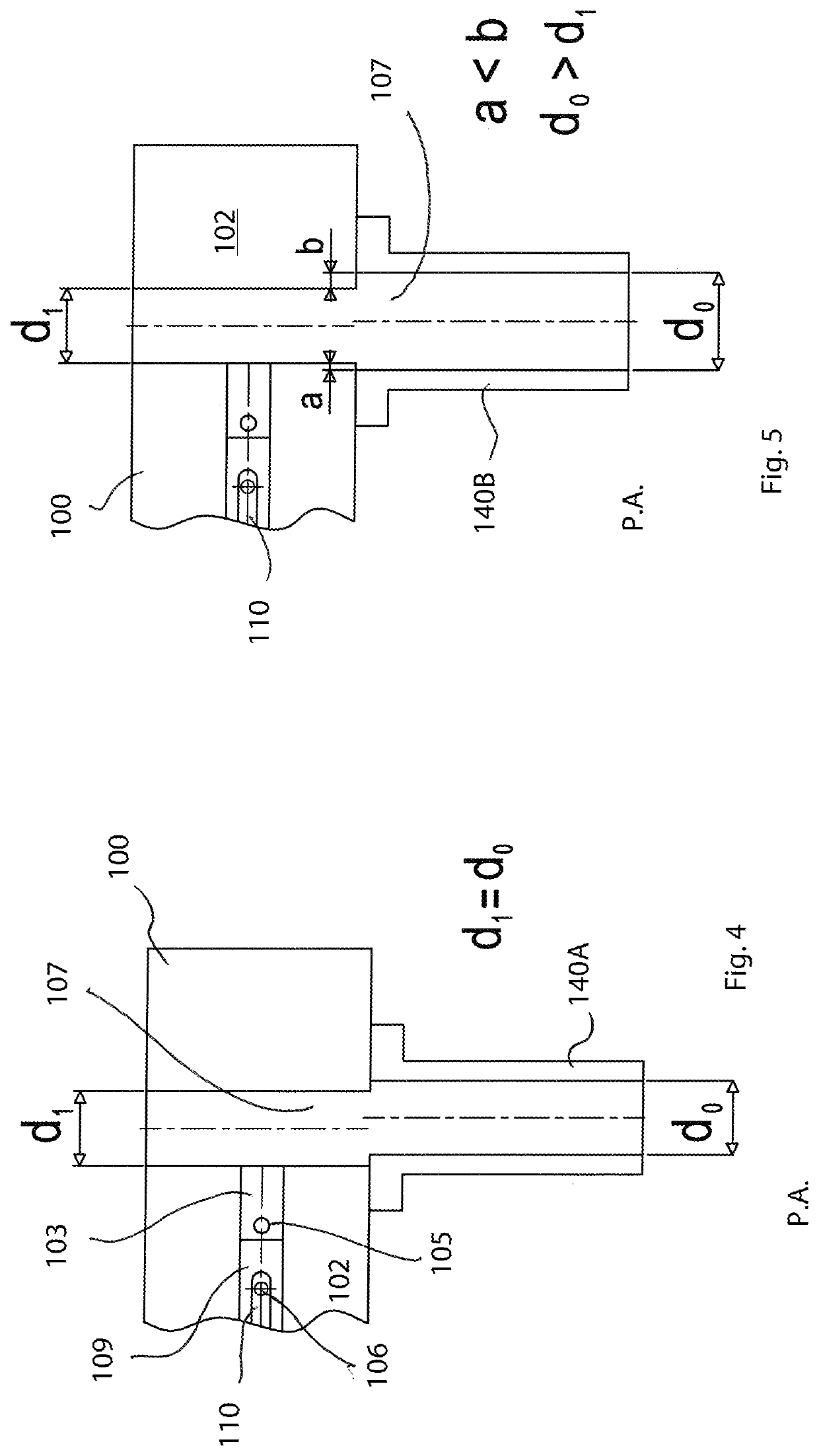High-pressure mixing device with single-piece delivery duct
- Summary
- Abstract
- Description
- Claims
- Application Information
AI Technical Summary
Benefits of technology
Problems solved by technology
Method used
Image
Examples
Embodiment Construction
[0109]Referring to the enclosed FIGS. 6 to 45, an “L-shaped” high-pressure mixing device 1 according to the invention is disclosed, configured to mutually mix two or more liquid components or reactive resins to form a reacting polymeric mixture intended to be poured or injected to produce various objects. Polyurethane, vinyl ester, silicon and phenolic resins can be processed.
[0110]The mixing device 1 comprises a head-body 2 configured with a mixing chamber 3 having an inner cylindrical surface 4 provided with inlet openings or holes 5 and recirculation outlet openings or holes 6 for respectively inletting and recirculating liquid components or reactive resins; on the inlet openings 5 there are injectors that generate the jets of the two or more reactive resins transforming the pressure energy into kinetic energy of the jets.
[0111]Injectors can be placed opposite to one other or with various angles that converge in a single point of the jets.
[0112]Injectors are composed of a nozzle ...
PUM
| Property | Measurement | Unit |
|---|---|---|
| Diameter | aaaaa | aaaaa |
| Diameter | aaaaa | aaaaa |
| Diameter | aaaaa | aaaaa |
Abstract
Description
Claims
Application Information
 Login to View More
Login to View More - R&D
- Intellectual Property
- Life Sciences
- Materials
- Tech Scout
- Unparalleled Data Quality
- Higher Quality Content
- 60% Fewer Hallucinations
Browse by: Latest US Patents, China's latest patents, Technical Efficacy Thesaurus, Application Domain, Technology Topic, Popular Technical Reports.
© 2025 PatSnap. All rights reserved.Legal|Privacy policy|Modern Slavery Act Transparency Statement|Sitemap|About US| Contact US: help@patsnap.com



